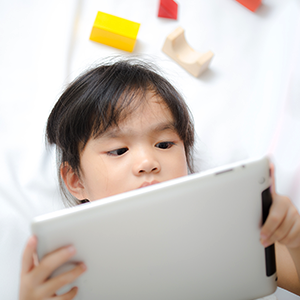Question:
My second-grader loves reading e-books far more than print books because
they have so many fun, interactive features. Are there any downsides to her
love of e-books?
Answer:
One important question comes up: Is your child really reading the e-books
or is she spending more time playing with the interactive features? One
study by Carol Smith and Jordan Schugar showed that children spent as much
as 43 percent of their time using e-books playing games rather than
reading. You should observe what your daughter is doing with e-books. Is
she spending most of her time reading them or playing games on them?
If she is spending more time playing games, different e-books should be
selected. You want to find those that force her to have more interaction
with the actual text. And that interaction should occur on the page that
she is reading, rather than on a different screen. Plus, these interactions
should be brief; otherwise, she is likely to lose the thread of the story.
There are other negatives to children reading e-books over traditional
print books. One is the “read to me” option. It can be helpful when
children meet words that they do not know. However, if used too frequently,
it can stop children from using important word attack skills, like sounding
out a word. Also, if children use the dictionary feature too often to learn
what words mean, they are not learning to use the context of the story to
get the meaning of the word.
Unfortunately, not all e-books are of the same quality. Parents need to
look for those that feature interaction with the text. And parents should
also talk with their children about the e-book stories that they have read,
just like they would talk to them about print books.

